

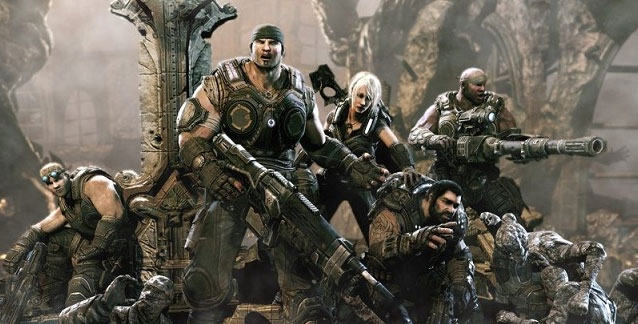
Limited edition copies of Gears of War 3 come with a hulking menace of a bonus: an 11” tall, 9” diameter figure of its hero character, Marcus Fenix, kneeling with a grimace on his face and a machine gun beneath his fist. The special edition statue is striking, and not just because of its details or high price tag. Unlike most limited edition game trinkets, this one acknowledges a weird truth for its series: Gears of War is an action figure game.
In most modern 3D shooters, the thrill comes from being addressed as a soldier. Your HDTV shows a first-person perspective, and your in-game hero rarely speaks aloud, like a high-octane take on Blue's Clues. Gears bucked that trend with its 2006 debut by raising its camera above the action, showing your soldier in the fight. The camera shift meant players could take cover and shoot behind barriers without getting dizzy.
It was—and often still feels—novel for the form. But that camera shift was about more than utility. The soldiers and villains look like they've been molded and painted with the utmost care. Using your Xbox controller, you figuratively pick them up and slam them together in the Dilapidated City playset whilst yelling out the sounds of two chainsaws grinding against each other--”VROOM VROOM!” Everything in Gears looks big, plastic and tangible, and the fluid control scheme only bolsters that sensation.
Epic Games doesn't publicly acknowledge this side of Gears; in a recent chat, design director Cliff Bleszinski repeatedly referred to Hollywood blockbusters and movie-like aspirations. Thing is, that's exactly what dragged 2008's Gears of War 2 to a halt. Epic threw out the series' circular and dynamic battlegrounds in favor of long hallways—you can't miss the big explosion if you're always looking straight ahead, right?--and the ham-fisted writing went down the same predictable chute.
In the arms of that 9”x11” statue, Gears of War 3 takes pride in its status as a toy. The game's (supposedly) final chapter reclaims its action figure pedigree and gives fans something very, very fun to play with.
Like the story modes in prior games, Gears 3's main quest stresses combat, not puzzles or other adventuring tropes. Getting the setpieces right, then, makes or breaks the 13-hour quest, and for the most part, your hours of service will be rewarded with memorable shootouts. From the opening stand aboard a battleship to the defense of a military outpost to the massive palace at game's end, the game's locations do everything they can to mix up obstacle arrangements, enemy spawn points, flanking positions and scenic wonders.
It's one thing for the story mode to dump players into Gears 1-styled battlegrounds and say, “Whoopsie, sorry about that!” It's another to get the little touches right. You may have heard this before, but Gears 3 really does nail the series' famed duck-and-cover mechanism. Locking into a safe spot, hopping to a new one and maneuvering around, whether alone or surrounded by glowing freaks, balances speed and weight to keep blood pressure on high during combat for reasons other than “that's not what I meant to do!”
But perhaps more notably, Gears 3 outdoes its predecessors by finally forcing players to jump out of cover and move around a map. A new race of baddies, the Lambent, will explode, throw clouds of fire and leave poisonous trails. Those Lambent appear by way of grisly looking stalks that erupt from the ground, which must be shot at from all angles to deactivate. And the series' famed Locust have a couple of new toys, particularly a burrowing missile launcher called the Driller. If those aren't reasons enough to abandon your cover positions, your foes can now blow your cover to bits. Keep moving and carry on.
Why should we care about these battles beyond their basic thrills? The action-figure metaphor still works here, thanks to a largely archetypal cast of characters—but sci-fi novelist Karen Traviss, tasked as the head writer here, makes the most of her source material. Gears 1 & 2 were just plain dumb, and while the writing in Gears 3 bows to the series' supposed blockbuster status (one-liners, dead ahead), it treats its muscly cast with surprising grace. Former football great Augustus Cole experiences a Vietnam-style flashback to his glory days that's as exhilarating as it is sad. Dom “my wife is dead” Santiago does more than talk about Maria (finally!). And a search for a long-lost father doesn't magically pry open the steel trap of Marcus Fenix's personality; such a writing decision should be commended.
That doesn't mean the campaign is some note-perfect symphony of blood and feelings. Some of the characters—particularly the strong female leads—are left neglected, while substantial stretches of the game lose all connection to the plot, turning into point-A-to-point-B slogs (which is mostly a bummer because of Gears 3's best plot-and-action synergy moments). And while some vehicle segments kick a high level of ass, particularly the speedy trip to the city of Char, the game's boring submarine level, and its teeth-grindingly bad dialogue, may go down in gaming history for the wrong reasons.
But the trilogy's storyline concludes in satisfying fashion, pockmarked with boss battles and non-combat sequences that prove far better than any in the series' past. After the credits roll, the fun really begins.
That campaign gets second life in Arcade mode, which sees up to four players cooperating against the invaders and battling each other for points. Ramp up the difficulty with modifiers; be surprised every time with dynamic enemy locations. In similar fashion, the series' famed co-op Horde mode returns, but rebuilt with a splash of tower defense. Again, you battle wave after wave of enemies while hunkering down in a single base, but this time, your kills earn you cash to build defenses like turrets, barbed wire and decoys. Friends can split the duties here between building and killing, which adds a nice element of teamwork to the co-op experience.
Beast mode turns the Horde concept on its head, as you and three friends switch roles and become the invading Locust, bearing down on a hunkered gang of humans. It's a cool twist because Beast embraces the fact that you'll die. That's fine! Die a bunch. The cash you acquire from kills is spent on respawning bigger, badder creatures who fit any given challenge, from the crawly buggers that can take down barbed wire to the strong, slow beasts who wield kill-'em-all machine guns.
Rounding out the package is a large suite of versus modes, which don't add a ton of changes to the Gears formula. At the very least, they address the crucial criticism of Gears' online combat—that the game's famed duck-and-cover system is overshadowed by rush-and-shotgun. That move'll still win you games of Team Deathmatch, sure, but if you want to play the game as it's designed—hide out and flank your enemy by working with a smart team—you can finally do so more effectively. A “marking” system, swiped from the Battlefield series, allows players to spot foes in the distance and mark them with an icon for a few seconds, helping teammates close in on a foe. The standard-issue Hammerburst rifle has been given greater long-distance effectiveness, and the Retro Lancer trades accuracy for power to deliver a nice short-burst rifle option against shotgun-runners.
Epic has teased a ton of add-on content, but Gears 3 ships with ten very cool maps out of the gate and plenty to do on them, so you can presumably ignore the DLC. What remains to be seen is how Epic deals with the bad side of the action-figure world—the bully who swipes your toys. Gears 1 & 2 were marred with online issues, from glitch exploits to connectivity hell, and Epic has pledged to keep a close eye on the playground by operating the game's servers and posting frequent updates. Whether that'll pan out on Xbox Live, a service that is notorious for holding up crucial online game updates (see Team Fortress 2, Monday Night Combat and dozens more), is anybody's guess.
Still, these action figures and their landscapes of doom are detailed, massive, plentiful and polished. Players won't suffer by glitches, by brevity or by lack of tactical forethought. Or, more importantly, by hubris and overreaching on the developer's behalf. Gears of War 3 is just a game—and thank goodness for that.
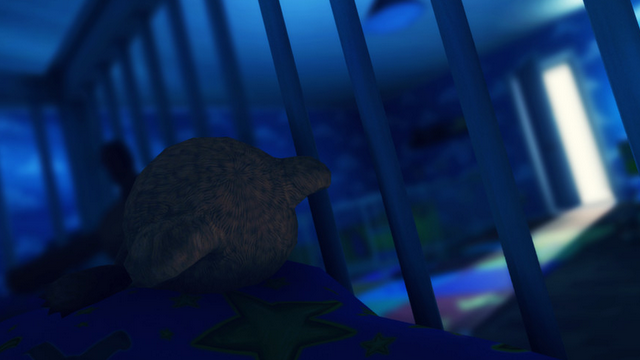
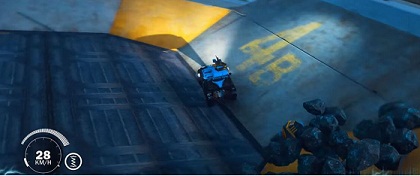
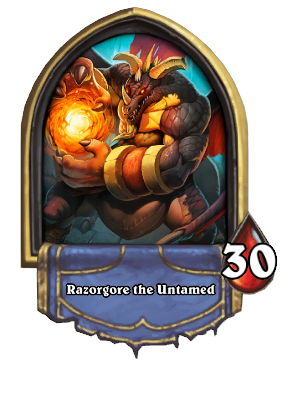
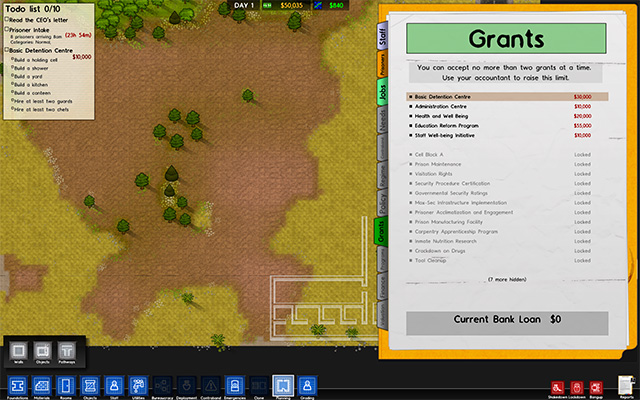
 Evolve E3 2014 Preview: Still A Tremendous Amount of Fun
Evolve E3 2014 Preview: Still A Tremendous Amount of Fun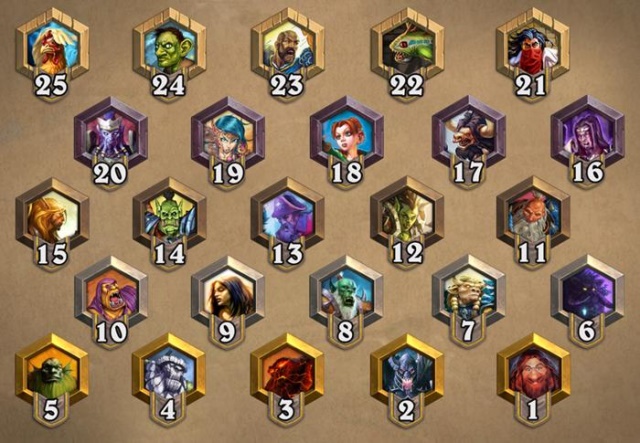 5 Tips Before You Play Your First Hearthstone Game In Open Beta
5 Tips Before You Play Your First Hearthstone Game In Open Beta Is Your Home Energy Efficient? 7 Things You've Overlooked
Is Your Home Energy Efficient? 7 Things You've Overlooked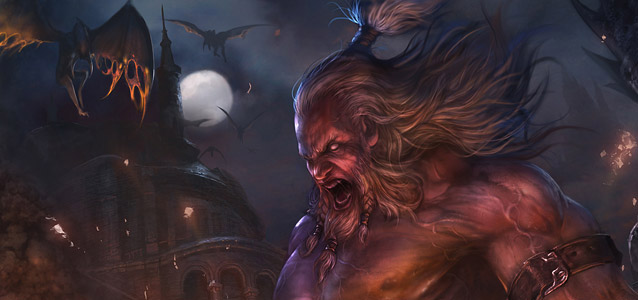 A Diablo III Guide: How to get to the Secret Level, Whimsyshire
A Diablo III Guide: How to get to the Secret Level, Whimsyshire Armikrog Wiki – Everything you need to know about the game .
Armikrog Wiki – Everything you need to know about the game .